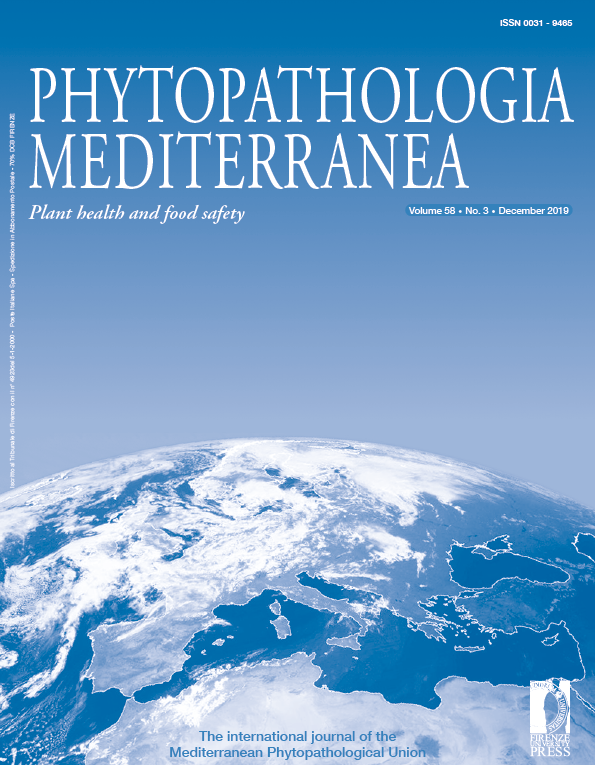Fungicide suspensions combined with hot-water treatments affect endogenous Neofusicoccum parvum infections and endophytic fungi in dormant grapevine canes
Published 2019-12-30
Keywords
- Vitis vinifera,
- tebuconazole,
- cyprodinil,
- fludioxonil,
- thiophanate-methyl
How to Cite
Abstract
Neofusicoccum parvum is an important opportunistic fungus causing Botryosphaeria dieback on grapevines. Because of its opportunistic nature, this pathogen spreads to many grape growing areas in a latent phase, and causes serious economic losses. The aims of the study were to examine hot-water treatments combined with fungicides in order to cure latent infections of artificially inoculated N. parvum in dormant grapevine canes and to assess the effects of these treatments on endophytic fungi. Artificially N. parvum-inoculated canes were dipped into cyprodinil + fludioxonil, tebuconazole or thiophanate-methyl suspensions under the following temperature-duration combinations; 30°C for 12 h, 35°C for 6 h, 40°C for 2 h or 50°C for 30 min (temperature at 50°C was not combined with fungicides). Treated canes were cooled in tap water (18°C) for 1 h, and pathogen re-isolations were immediately attempted from inner wood tissues. Extent to which these applications affected the presence of endophytic fungi were also determined by calculating pre- and post-treatment isolation rates. Hot-water treatments (without fungicides) below 52°C did not reduce N. parvum re-isolation rates, and were ineffective. However, these treatments combined with fungicides decreased pathogen incidence at 50°C and below. Maximum reduction (34%) was obtained with heated tebuconazole suspensions at 40°C for 2 h and 50°C for 30 min, and eradicative ability was superior to that of cyprodinil + fludioxonil or thiophanate-methyl. The hot-water treatments reduced incidence of endophytic fungi but greater reduction was observed with the hot-water and fungicide combinations. Fungicide penetration into wood tissues of propagation material could be enhanced by increasing water temperatures in hydration or hot-water treatment tanks, and this approach could be useful method for production of healthy grapevine plants in nurseries.







